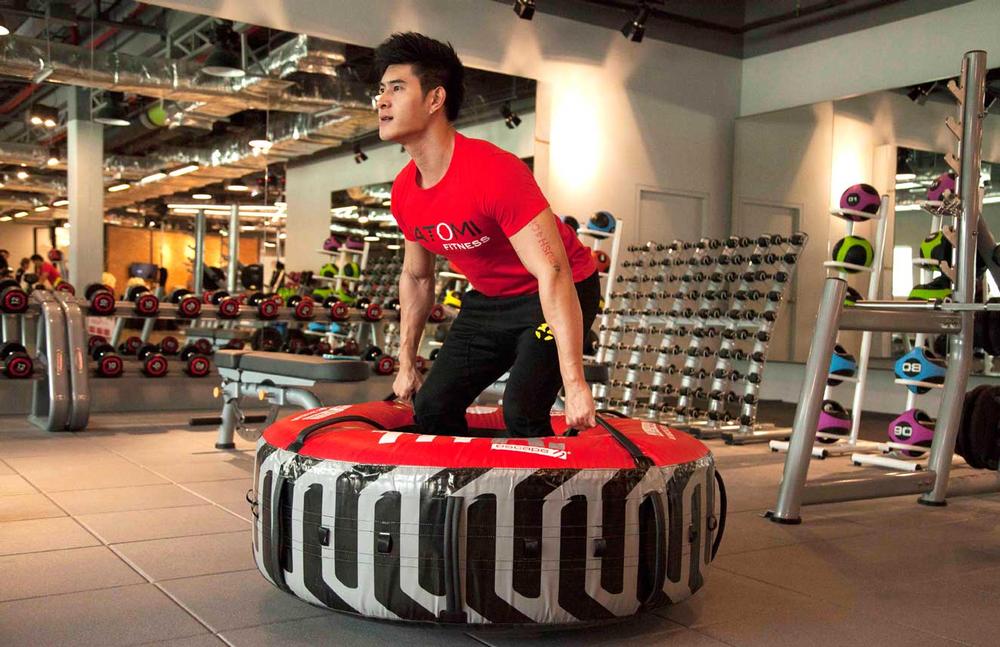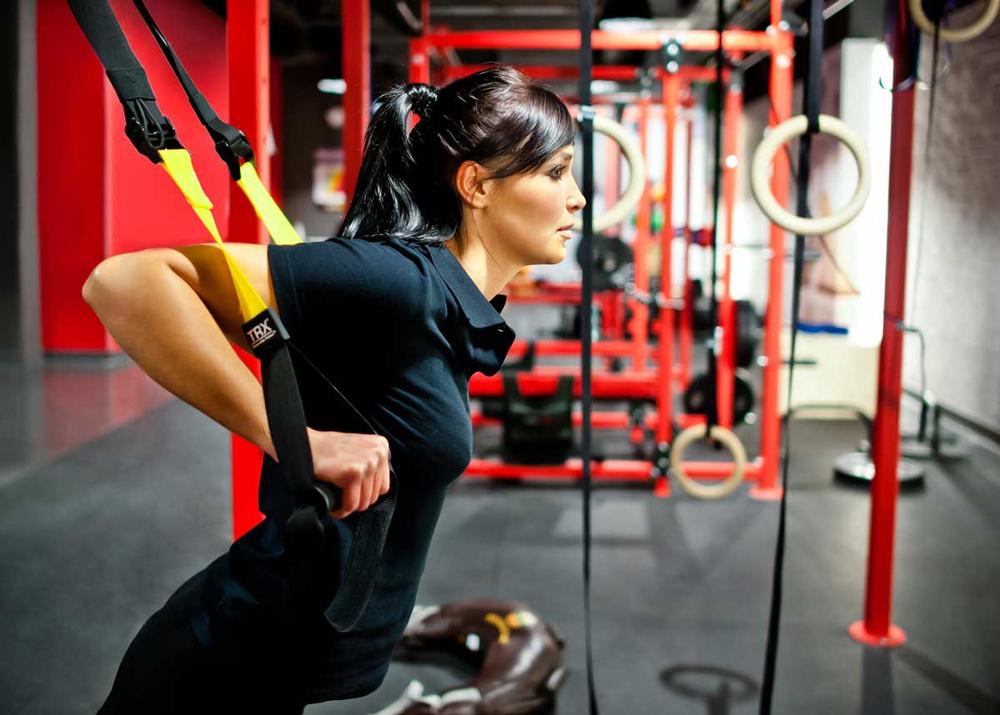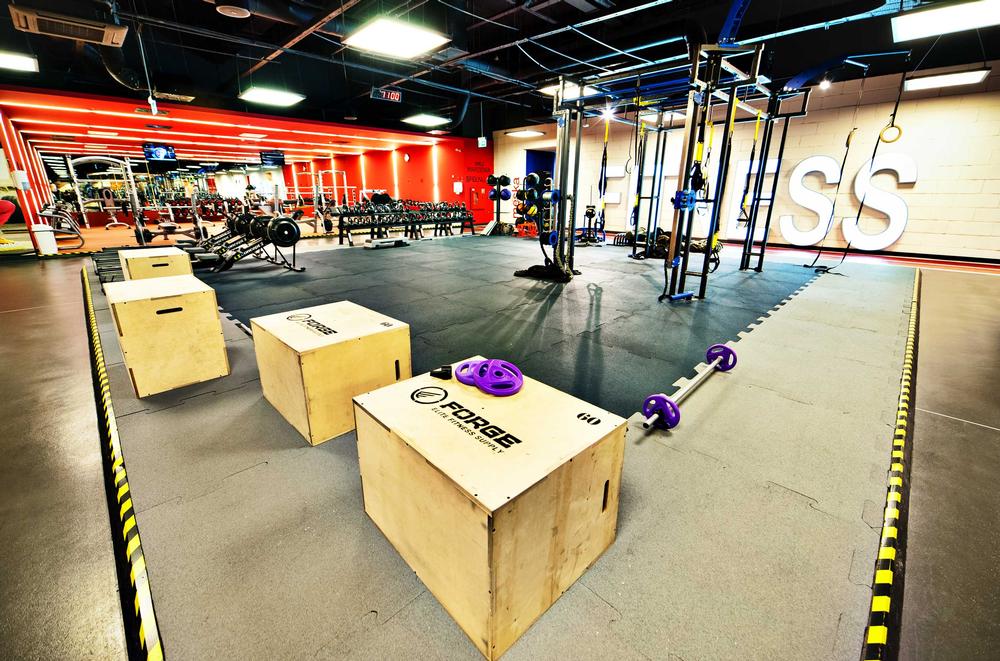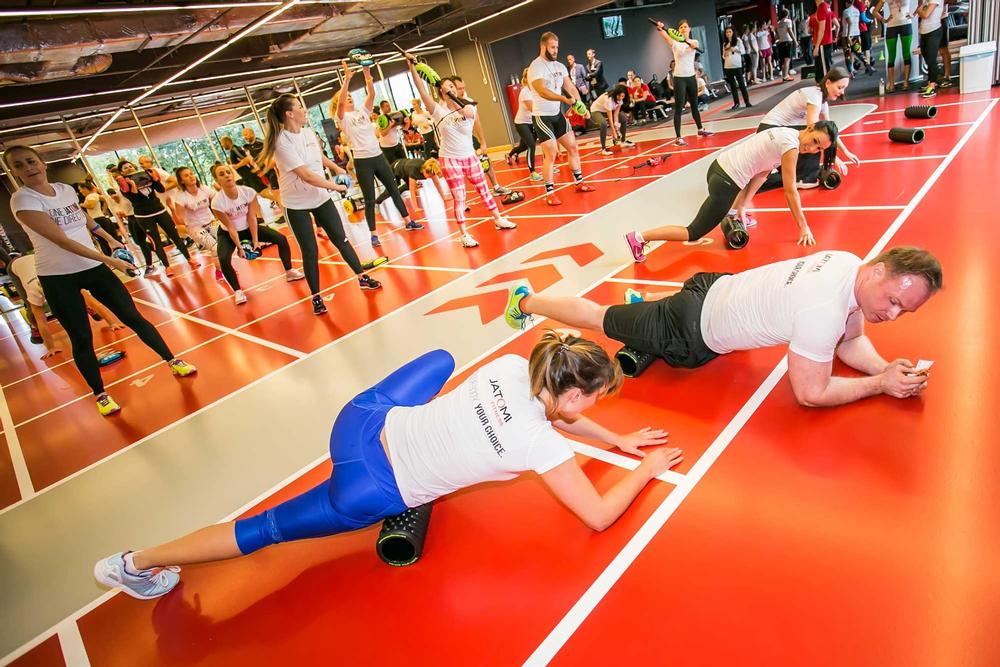features
Interview: Tracy Gehlan
The CEO of health club operator Jatomi Fitness talks to Kate Cracknell about building a business around the consumer, and the lessons we can take from the fast food sector
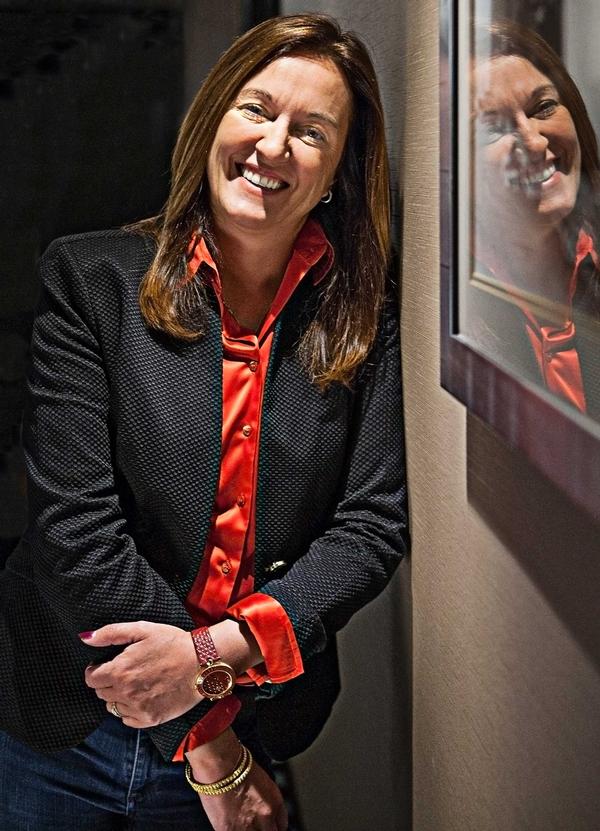
Tracy Gehlan has an interesting background for a fitness CEO, in that she’s come over from what some in the sector might consider ‘the enemy’ – fast food outlet Burger King.
“The move to Jatomi Fitness was almost by accident,” she admits. “That said, I’ve been involved in sport all my life – I was an athlete when I was younger, and all my sons have done international judo. So when this job came along it seemed like a dream opportunity to combine what had been a hobby with the business knowledge I had.
“Because although the products – burgers and fitness – are millions of miles apart, actually the business models are extremely similar. They’re both guest service industries focused on delivering a good product, on keeping your customers, on guest feedback. You can take the knowledge you have from one business and readily apply it to the other.”
She continues: “There seems to be a view in the fitness sector that, if you haven’t been in the industry before, you can’t just come in and work in it. There’s a reluctance to bring in anyone from outside – the same people just move around within the industry, and they’ve been sharing similar ideas for the last 10 years.
“I believe you have to look at what’s going on in the outside world – from a technology standpoint, an innovations standpoint... So one of the things I’m trying to do at Jatomi Fitness is change the culture by balancing fitness people with external experts. I don’t mind where our marketing people come from, for example, as long as they’re amazing at marketing. The same goes for finance, IT, social media, apps, retail… They just need to be experts in their respective fields.”
The fitness sector’s introspective viewpoint is also hindering its growth, adds Gehlan: “Everyone’s competing against each other head to head, battling over the small pool of people who’ve already decided to join a gym. That’s the wrong time and place to compete.
“Rather than competing against other gyms, we should be out there competing with diets, weight loss tablets, recipes, meal plans – all the other easier options consumers will try before they even contemplate joining a gym. Because I don’t want to be 15th on the list. I want to move my business into a position where it’s able to compete as soon as people start doing their ‘how to change my life’ research.”
Driving standards
Gehlan’s most recent role at Burger King was as VP of brand standards and excellence, and the endorsements on her LinkedIn profile speak to expertise in areas such as customer service and customer satisfaction – areas in which the fitness sector all too often falls flat.
Coming in with a fresh pair of eyes as she is – Gehlan only joined Jatomi Fitness in April 2015 – what are her first impressions of the fitness sector in this respect?
“It’s a very inspiring industry, but when you pull back the blankets there aren’t really any standards or processes. And that’s not just in our company: we had none when I arrived, but I can’t find them anywhere. No best practice, no standards, no systems.
“When I joined Jatomi Fitness we had 18 different logos, but that was just a symptom of the root cause: a lack of standards. So we’ve gone back to the foundations, effectively building these under the existing company – putting standards and processes in place to create what I call our gym blueprint, which covers everything from the hiring process to building a new club.
“If you want to grow as a brand, you have to have these systems and processes – it’s just not possible to do it without them. And we certainly have big growth plans at Jatomi Fitness – we want to reach 250 clubs in five years. At the moment we have no plans to franchise, but this sort of structure means we could if we wanted to. We could simply say ‘here’s the blueprint – this is how it works’.”
Personalised packages
The Jatomi Fitness estate is now 64 clubs strong, including three of what Gehlan calls ‘blueprint clubs’ – the template for all new openings going forward – that opened in Q4 2015: one in Poland and two in Bangkok, Thailand.
The company’s history (see ‘ The Jatomi Fitness story’, below) means there’s still work to do on brand consistency from a consumer perspective – residues of the old Pure brand still remain – but, says Gehlan: “Internally, everyone who works for us now understands who we are, what we’re doing and what we stand for as a brand.”
She explains: “First of all, I wanted to build a brand for everybody. The way I talk about it, Jatomi Fitness isn’t mid-market, it’s mass market.
“Pure Jatomi Fitness positioned itself as more high-end, and we have some amazing clubs with swimming pools, saunas, spas. But local salaries don’t justify this: we can’t only offer high-end clubs in Poland or Turkey, for example. You become niche, and I don’t want to be a niche business. I want to be a business where it doesn’t matter how much you earn, there’s something for you.
“So we start with an entry price – about €16 a month in Poland for off-peak access – and if you want to add on the occasional class in peak hours, you can pay as you go for €2 a class. Meanwhile, in markets such as Turkey where the culture necessitates women-only areas, our female members get a slight discount because they can’t use all of our facilities.
“At the other end of the scale, our ‘extreme programme’ includes one PT session a week and access to all our clubs. In some clubs we even have VIP sections – very exclusive areas with their own changing rooms and with a PT working with you at all times.
“Ultimately you can come for anything you want, and that’s where I want to be. I don’t want to define our offering as low-cost, high-end, mid-market. What I’m saying is: we’re an experience, and no matter how much time or money you have at your disposal, we’ll fit that experience around you and personalise it.”
She continues: “With every new member, we discuss how much money they have to spend on their fitness, how much time they have to allocate to it, what they want from their club, and we structure a programme around that. And if further down the line they find they’re not using the club as much as they hoped, or it’s proving too expensive, we can adjust the package.”
She continues: “Creating an experience where members want to keep coming back is also paramount, and we’re releasing our guest journey this month [January 2016]. This will include key points for each guest when we’ll meet them, measure them, see if we’re delivering against their goals. It will be for new joiners and also retrofitted for anyone who’s been with us up to six months. We’ll do something different for the longer-standing members, but they won’t be forgotten.
“All our team members will be trained in this, and if we miss any of those steps, we’ll have done something wrong.
“We also want to create a social aspect, so going to the gym is something members do with their friends – almost like going to Starbucks or the cinema. You have to be ready to compete with those other areas of leisure.
“It’s a completely different model we’re trying to build and it’s not going to happen overnight, but interaction with team members will be key and is an area in which I’m keen to differentiate our clubs.”
Blueprint clubs
She continues: “In terms of the actual facilities, our blueprint clubs are very open: the reception desk, even the sales area – there are no offices. All the team members should be out there welcoming you, talking to you, making you feel welcome. We’ve invested heavily in our changing rooms too, so it really is home from home.
“Meanwhile the gym floor is broken into three sections. The cardio and heavy weights areas have been designed in partnership with Matrix, and we’re monitoring them to make sure we have the perfect layout.
“But it’s our studio and functional zone that’s really innovative: you can pull the glass wall of the studio back to make it part of the functional area, so in the 60 per cent of the day when the studio isn’t being used, we can double the size of our functional space. We’ve taken out the wooden floor and put in a very, very special multi-purpose floor. Our three blueprint clubs are the first three of its kind. You can dance on it, use it for functional training, there’s a running track...
“We’re designing our own classes too, and these will all be highly interactive – we want people to have fun while they work out. We’ve launched a CrossFit-style programme called Escalate – you can have well over 30 people in that class and it’s a great buzz – as well as FitGirls, which was already averaging 92 per cent occupancy just two months after launch. We’ll be creating and launching another six programmes this year.
“We can really tailor to the individual markets in the functional zone too: offering Muay Thai in Bangkok, for example, as well as much more yoga.
“Our aim is to constantly innovate, and in fact we’re going to be building an Innovation Centre – hopefully in March or April this year.
“The Innovation Centre will be a club with just 1,000 members, and we’ll continually gather data and feedback from them: what works, what doesn’t, what they like, what they don’t like. Everything will be tried and tested there and, if something scores below a certain percentage, we won’t roll it out to the rest of our estate.
“There’ll be plenty of scope for member feedback at our other clubs too. We have member scorecards, for example, where people can tell us what their goals were, how they’re doing against these, what’s helping and what’s not. And we’re launching forum roadshows this month too, where my executive team and I will go into clubs to meet with members. We want these to be really open, honest sessions around what we’re doing well, what we’re not doing well, what they like, what they don’t like. We’ll take that feedback and go back to them to let them know about the changes we’ll be making in the business as a result.”
Learning from fast food
So is there anything else up Gehlan’s sleeve in terms of forthcoming innovations?
“We have lots of ideas – streaming classes so we can stay connected to members who travel a lot or who can’t always make it to the gym, for example. There are already apps to track activity, and we have to take all the pieces of this puzzle and connect them. That’s why I want to build the Innovation Centre – because I want to be able to see how it all links together into packages that fit people’s busy lives. If you can do that, you won’t be selling a membership – you’ll be selling a lifestyle.
“We also need to look at other ways of generating income through our brands. I can’t give you any more detail now, but we’re building a retail line of Jatomi Fitness products to buy in-club and online.
“We’re evaluating our PT model too. I think it might currently be a bit overpriced, but it might also be about marketing it differently – encouraging people to see it not just as one-to-one but as a session they can share with two or three friends. At the moment, 7 per cent of our members do PT. I want to triple that in the next year.
“I also think the gym industry is almost too commercial, in that we don’t do anything for children. We accept that our clubs are empty at weekends, and that’s really because mum and dad can’t come when they have the family at home. So maybe we need to do things differently – and I don’t mean a crèche. I mean something that’s happening at an introductory level.
“This is where fast food gets it right, because you can guarantee every three-year-old in the world knows what McDonalds is. They’ve already been programmed as its customers by the age of two or three, whereas we wait until they’re 18 or 19 before we start giving gym memberships.
“There has to be some hook. I don’t know what that is yet – all kids know how to use an iPad, so maybe fitness and technology need to combine to reach them – but we need to start earlier as an industry.
“The other thing fast food companies understand better than anybody is that people live on really tight schedules now. They have 30 minutes for lunch. They’re always on the move. There’s so much to do. So however you view fast food, we’d do well to learn from their understanding of time and convenience.
“Finally, crucially, is consistency. With the fast food brands, you know what you’ll get anywhere in the world – and that’s what fitness does terribly. Our customers don’t even trust that they can come to the same club and get the same thing every time, at the time they want it. We just don’t do convenience. We set our clubs up for us, not the guests, and the fast food companies do the opposite. Their brands are set up for the masses.”
The Jatomi Fitness story
The first club in the Jatomi Fitness estate opened in Poland in 2007, at that point operating under the Pure Health and Fitness brand. The operation expanded into Romania, the Czech Republic and Bulgaria – but it was when it began to eye an entry into Asia that a rebrand was required, as the Pure label was already taken in that part of the world.
“That’s where Jatomi Fitness came from, in 2012,” says the company’s new CEO Tracy Gehlan. “But it became a bit of a mess – the branding went wrong. Some clubs started to call themselves Pure Jatomi Fitness, some were still Pure, some dropped the Pure and became Jatomi Fitness. The company ended up with 18 logos, a whole mishmash of what the brand was meant to look like, and confusion over who it even was as a company. That’s something we’re still unravelling.”
In 2012 John Caudwell, the owner of Phones4U, acquired 51 per cent of Jatomi Fitness as an investment. He continued to buy more shares between 2012 and 2014 and now owns over 90 per cent of the business, is head of the board, and is eyeing large-scale expansion. “His ambition isn’t to have 50 or 60 clubs – it’s to have a global company,” explains Gehlan. “He therefore wanted someone with the experience to grow a brand and a company around the world, and that’s where I came in as chief executive.”
The estate now comprises 64 clubs – in Malaysia, Thailand, Indonesia, Turkey, Romania, Poland and the Czech Republic – and has a five-year target of 250 clubs. Twenty new clubs will open in 2016, including 10 in Asia – of which eight in Bangkok, in partnership with Big C shopping malls and Tesco.
“Aside from consolidating Bangkok, where there’s very high demand for our clubs – the waiting lists are huge – we’ll also open more sites in the Czech Republic in 2016, and in Poland, where we want to maintain market leader status,” says Gehlan.
“We’re looking at Vietnam too – our partners Big C and Matrix both have a strong presence in that market. I don’t think that will be 2016, although if unexpected opportunities arise we’ll certainly look at them.”
